Visiting Potsdam was a treat-on-the-side for our citytrip to Berlin in December 2014. Our original plan was to have a full day of exploring the park on the 25th (Indeed, on Christmas day). This would have meant leaving Belgium on Christmas Eve, after an evening of fine food and presents (but no alcohol, since I was driving…), and driving all night. We would have arrived in Potsdam somewhere early morning. A few days ahead, however, we decided against this plan, as we considered it too dangerous. So we had a good night’s sleep and left our home in the morning. As a result, we approached Berlin late in the afternoon, so there was no time left for Potsdam that day.
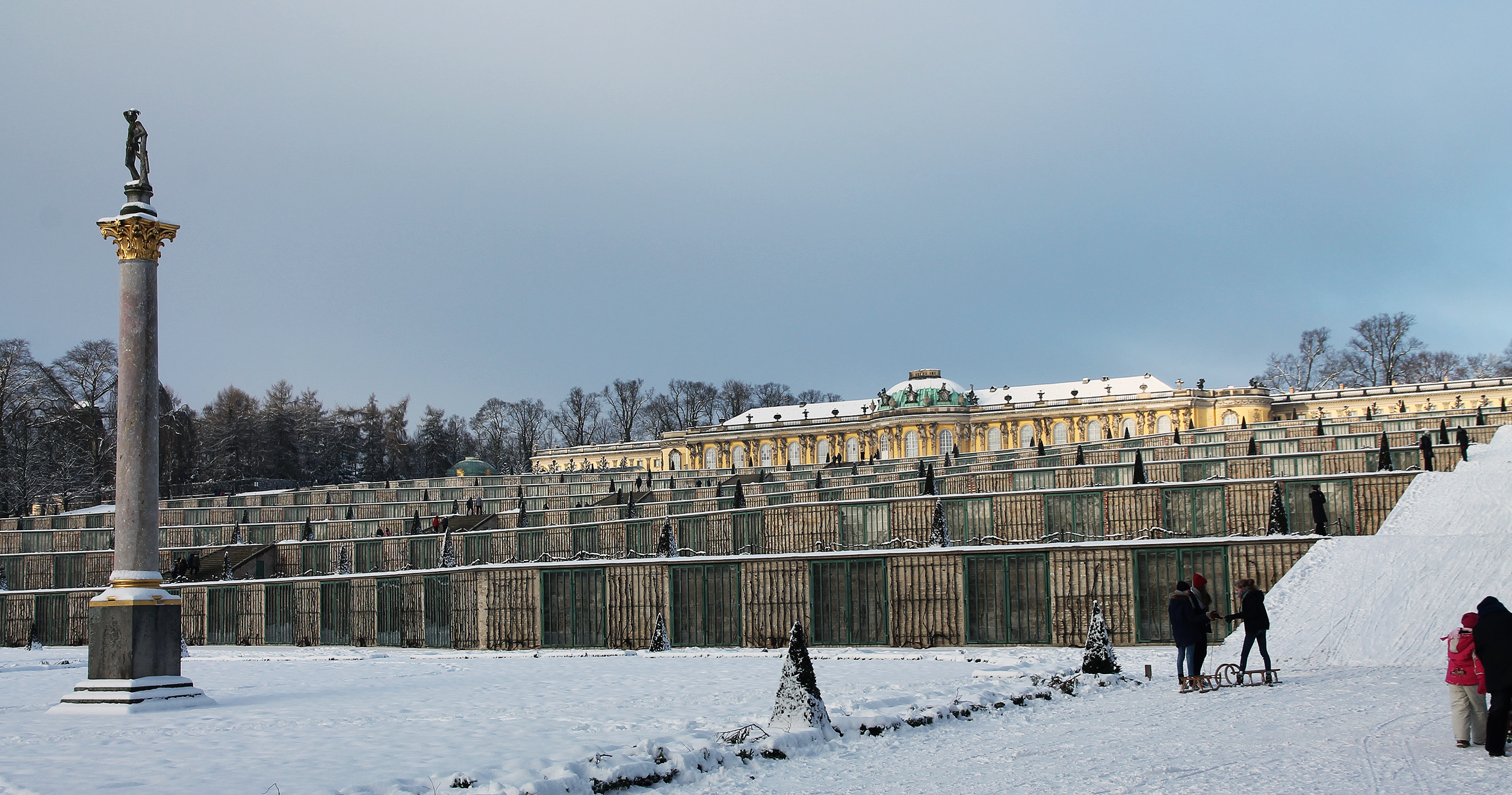
Plan B was to go to Potsdam on our way back. A good plan it turned out to be, as it had snowed and the whole park was covered in a beautiful white carpet. We parked the car close to the Obelisk entrance and decided to take our sleigh along, so Febe could sit on it during our walk. As you can imagine, Febe was super excited with the snow ànd the sleigh-ride!
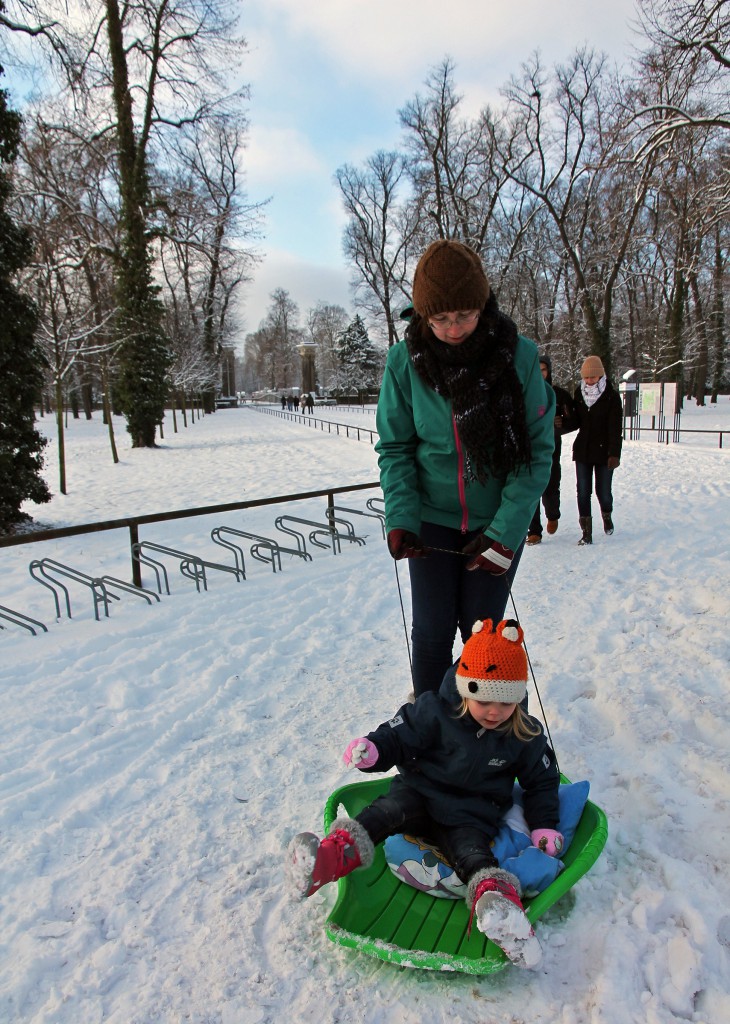
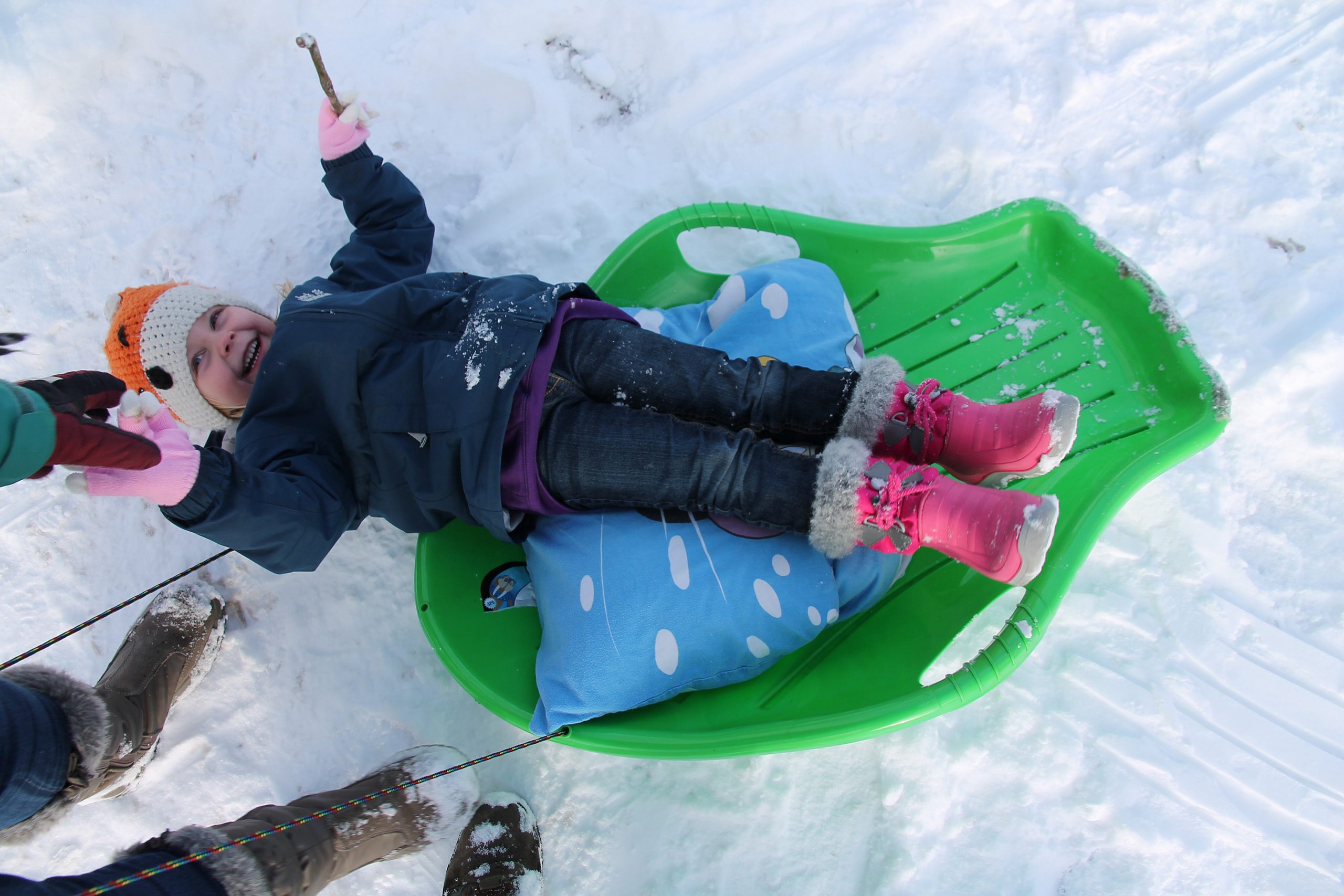
We passed the, obviously fake, obelisk (built in 1748) and entered between the two squares of pillars and the sandstone sculptures of the goddesses Flora and Pomona (of flowers and fruit). I must say I hadn’t even noticed the statues, as they are a bit hidden behind the pillars. In front of us, we could distinguish the Neues Palais (New Palace).
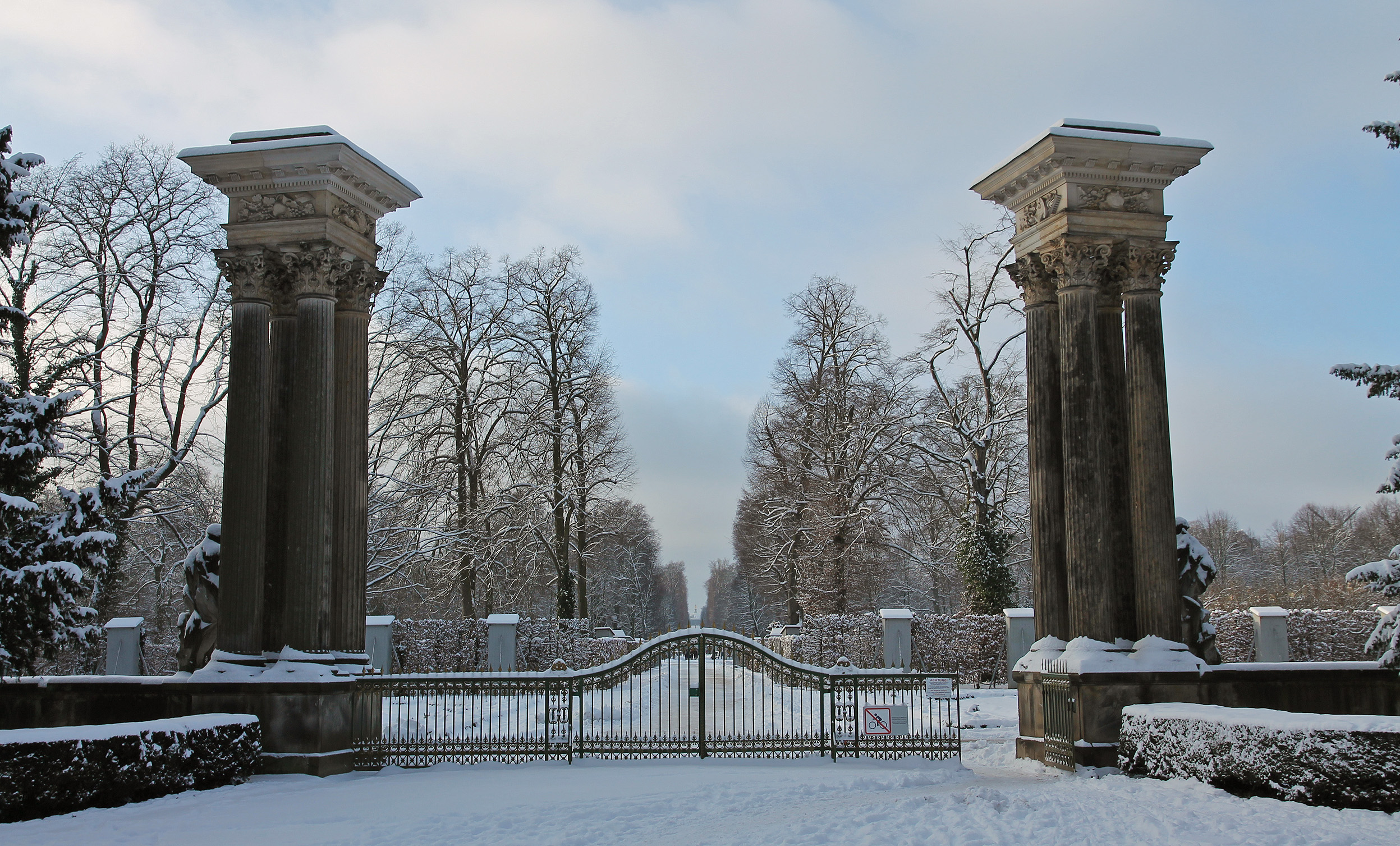
On our way in, we first saw the beautiful Bildergallerie (picture gallery) on our right side.

But the real fun began when we arrived at the Sanssouci Palace. The slopes alongside the terraces were being used as a sleigh and ski run by dozens of children. There was a cheerful atmosphere and Febe joined in immediately. Climbing up the slope with her was also the perfect way to get a beter view over the park from above, and to get closer to the palace. We stayed there for quite a while, and were having great fun.
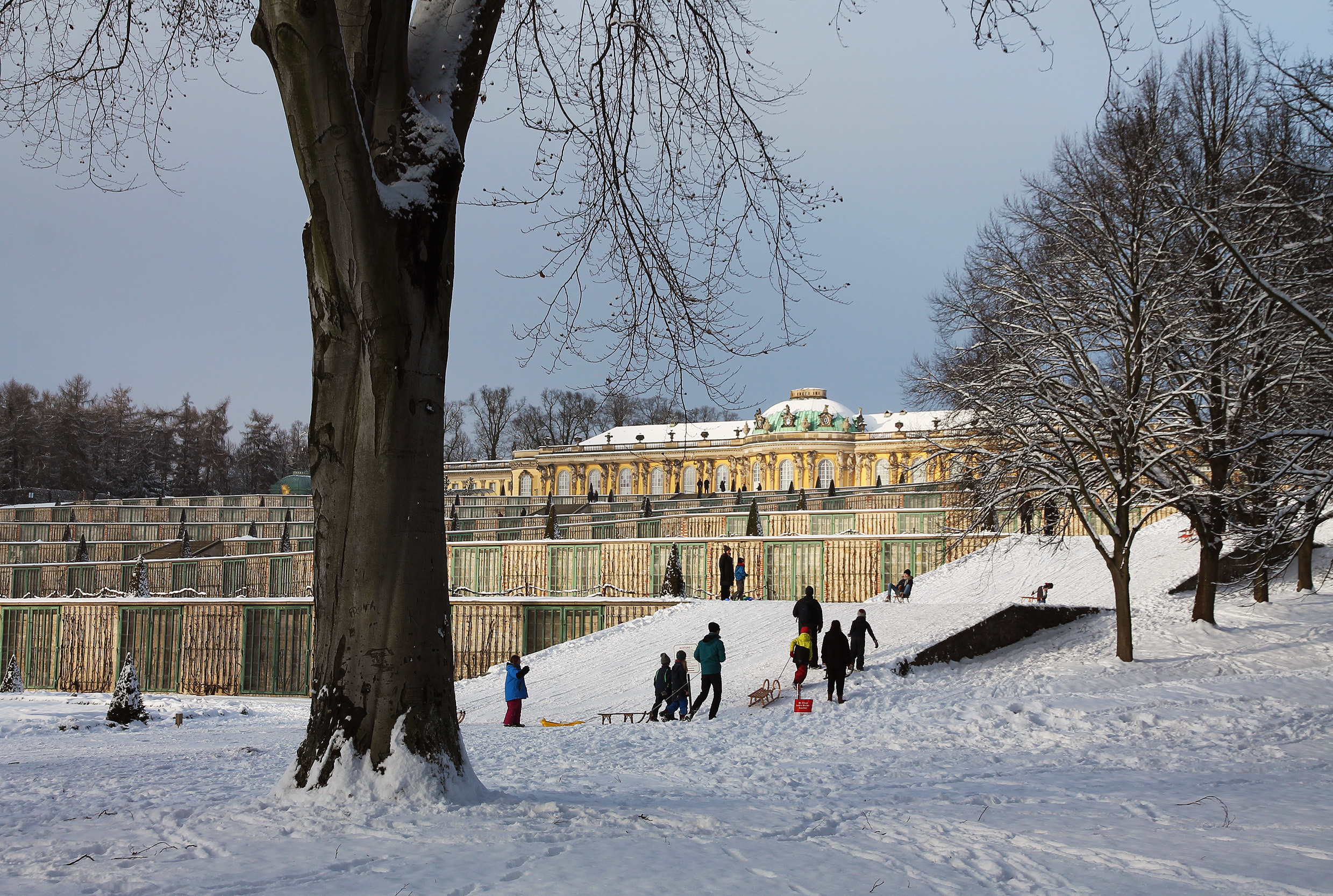
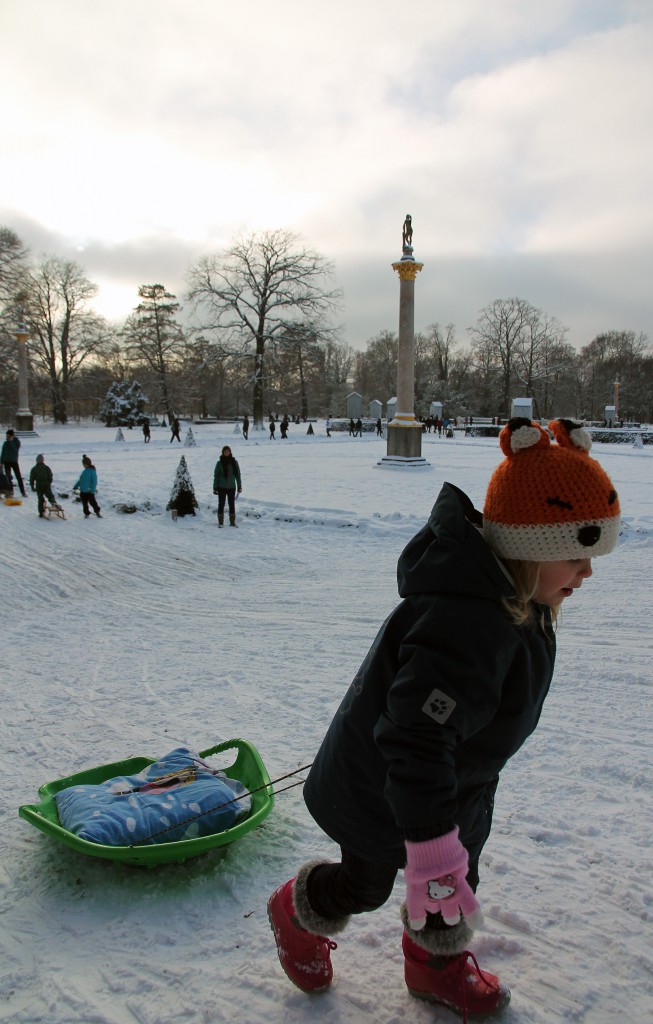
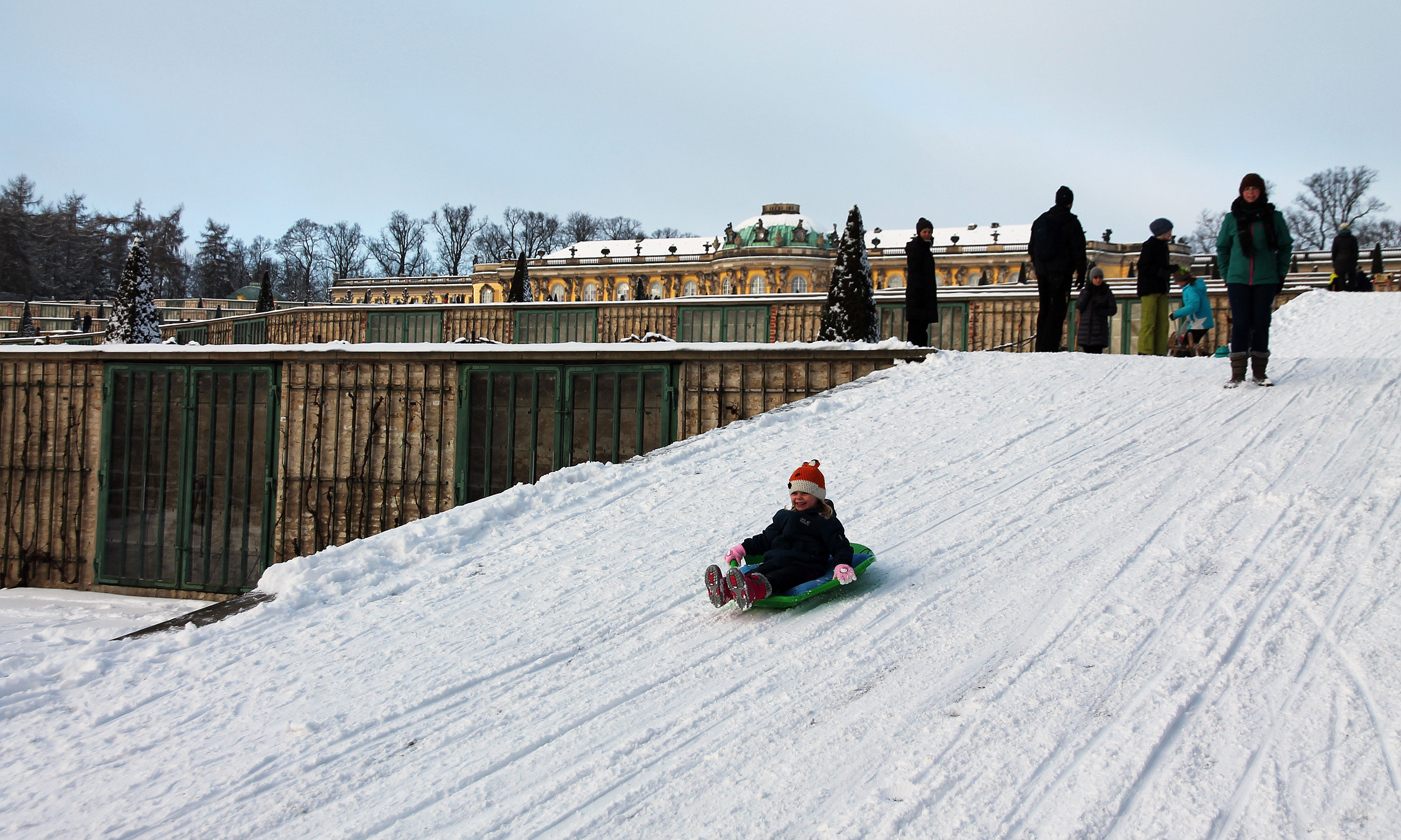

We continued our tour of the park and passed the yellow Neue Kammern (New Chambers) with the historical windmill behind it. The original mill was built in the 18th century, but was set ablaze during the second world war.

Next stop: the Chinese Tea House, although Annick and Febe never got that far. Suddenly, Febe realised that one of her rocks (she collects rocks everywhere), which she had brought with her in the sleigh (despite our warning), had fallen out and was missing. She started crying when she realised it wasn’t to be found again, and then started to realise that she was actually getting quite cold from all that playing in the snow. So she cried even more. I quickly went up to the Chinese Tea House to make some pictures, but when I got back 10 minutes later Febe was still very sad. So we decided to go back to the car where she could get warm again.
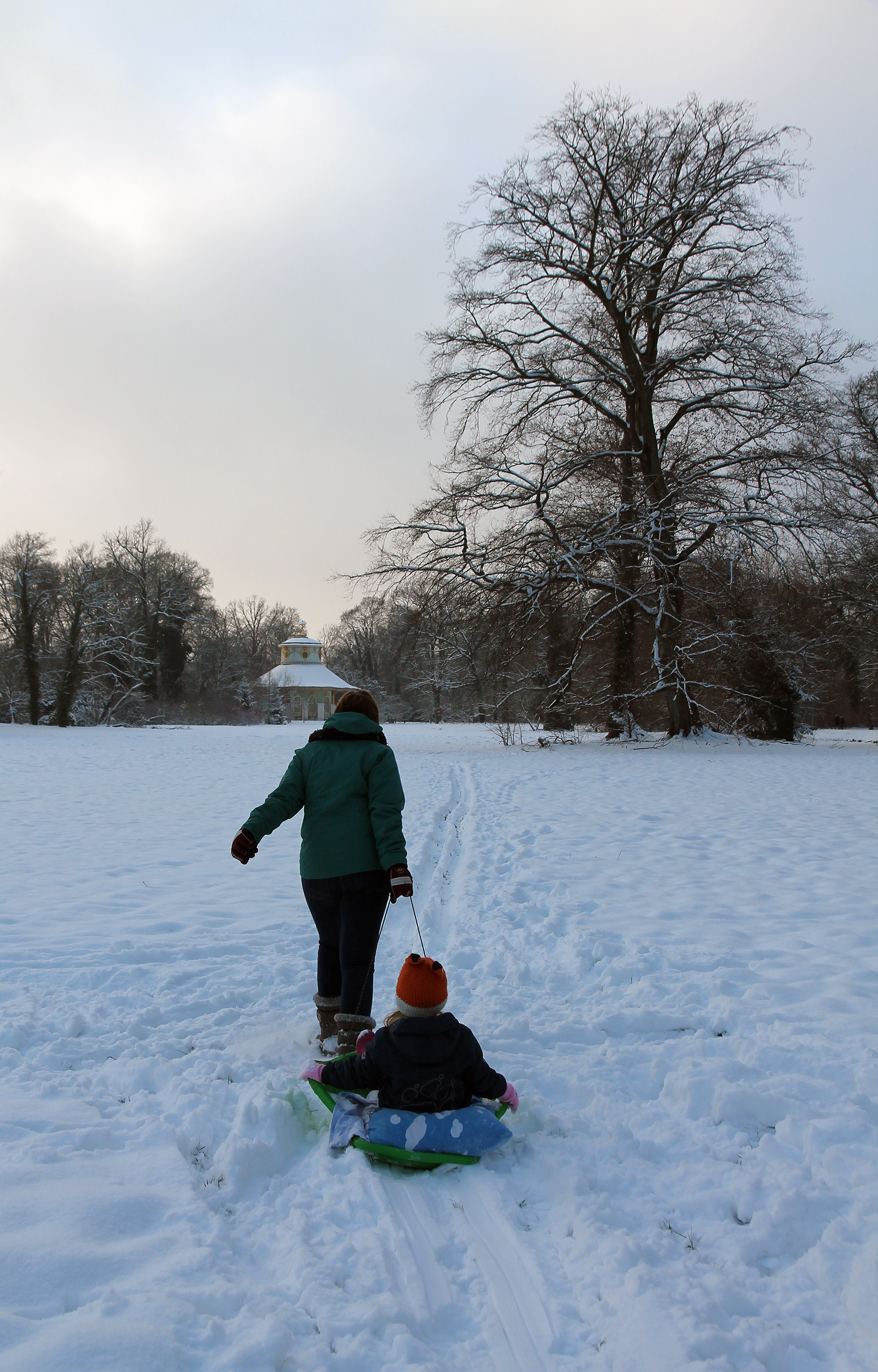
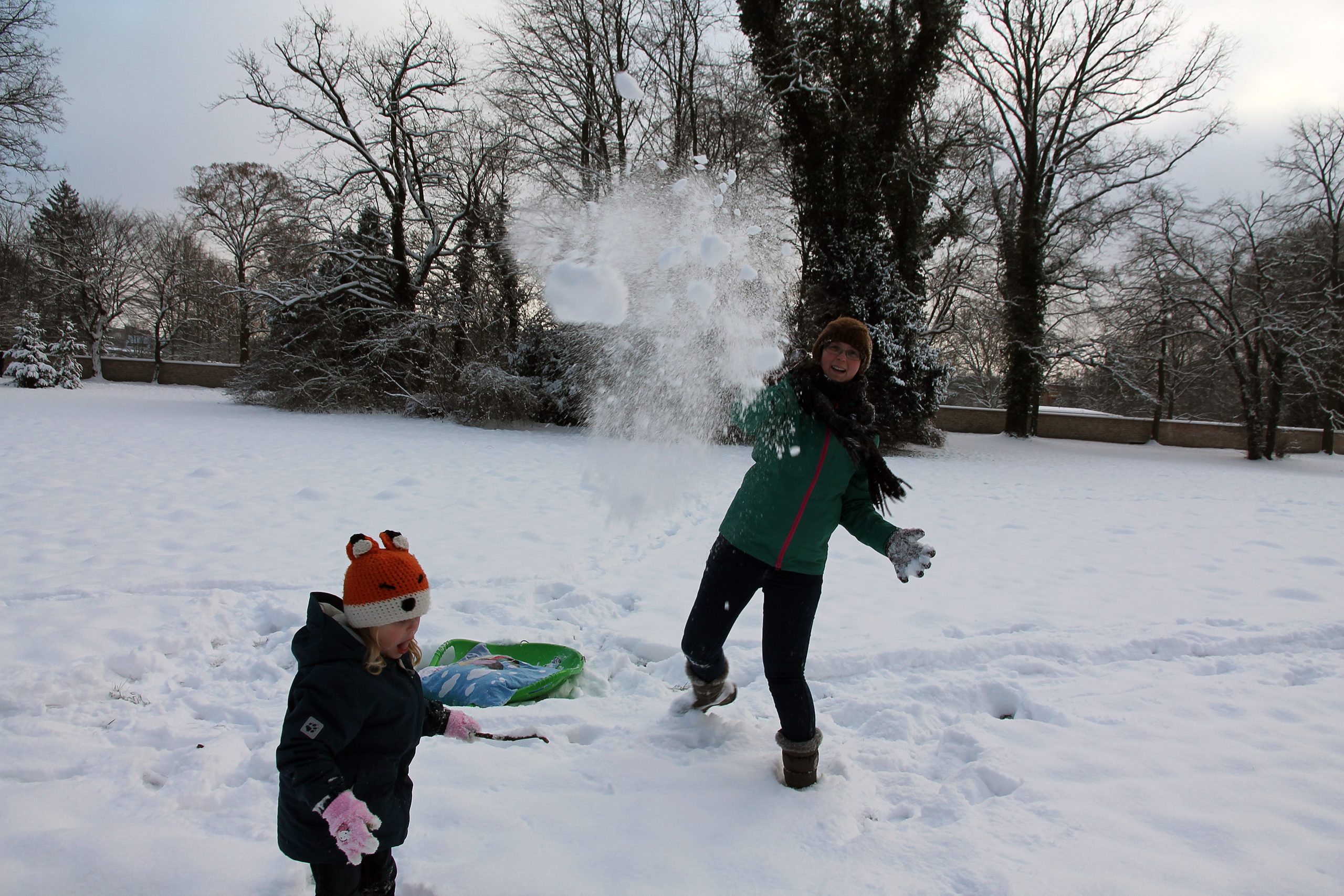
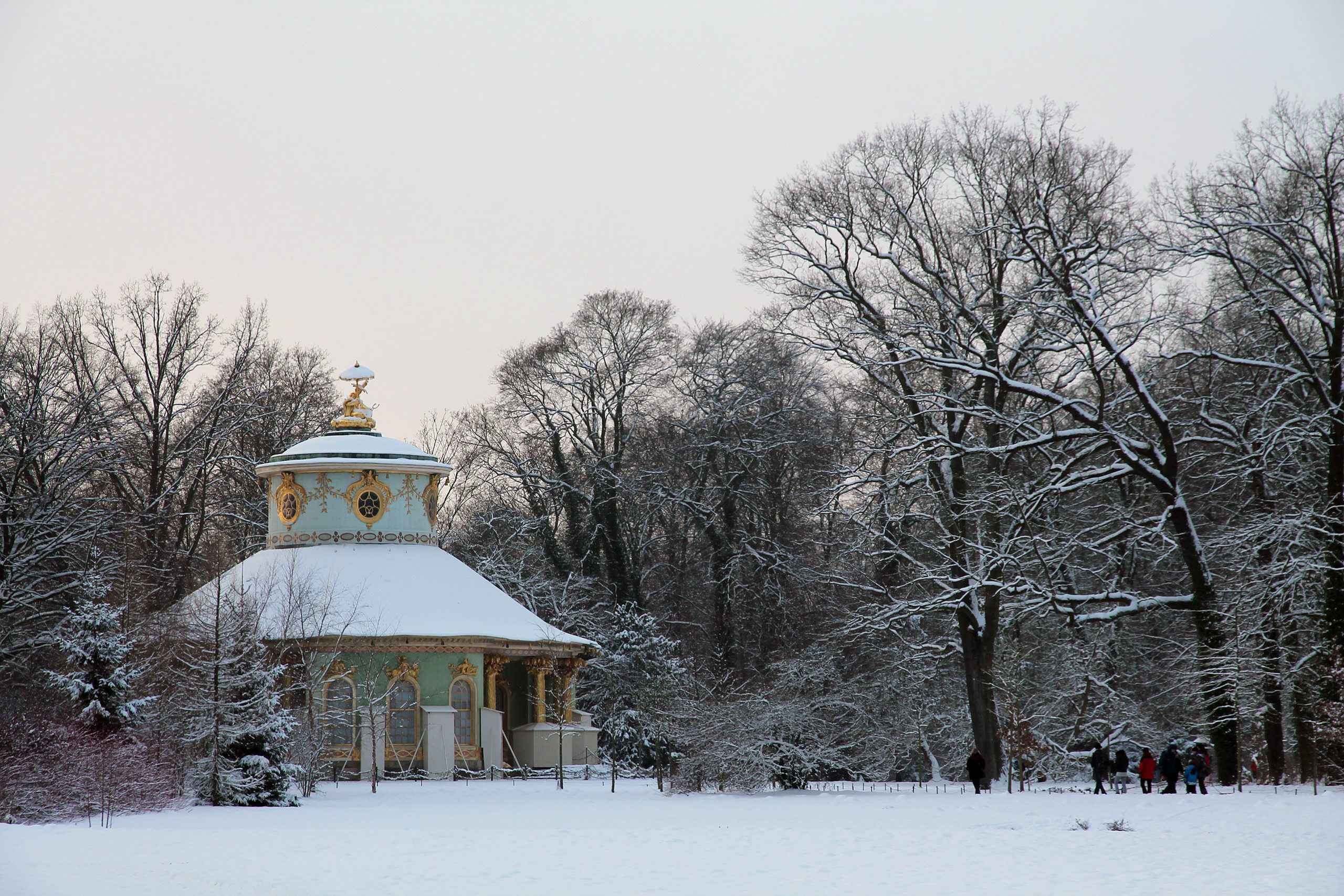

In short: visiting Potsdam Sanssouci in the snow is definitely a must-do for parents with children (bring your sleigh!), but do realise that the fun can be short-lived.
– M –
Palaces and Parks of Potsdam and Berlin (nr. 532)
The ensemble of the palaces and parks of Potsdam (500 ha in total!) is an exceptional, harmonious complex of architectural and landscaping masterpieces within a single space. Constructed between 1730 and 1916, Potsdam’s architecture spans a long period of time in which various styles replaced each other. At Potsdam, however, even opposing styles are merged into a unity that compasses the harmony of a general composition. Originally a military site, it was radically transformed into a ‘Prussian Versailles’ by Frederick II the Great in the 18th century, who made it his main residence: Sanssouci. The castle and park blended together European art trends of that era and has itself influenced the monumental arts ever since. The park is laid out around a number of building, each more beautiful than the other.




